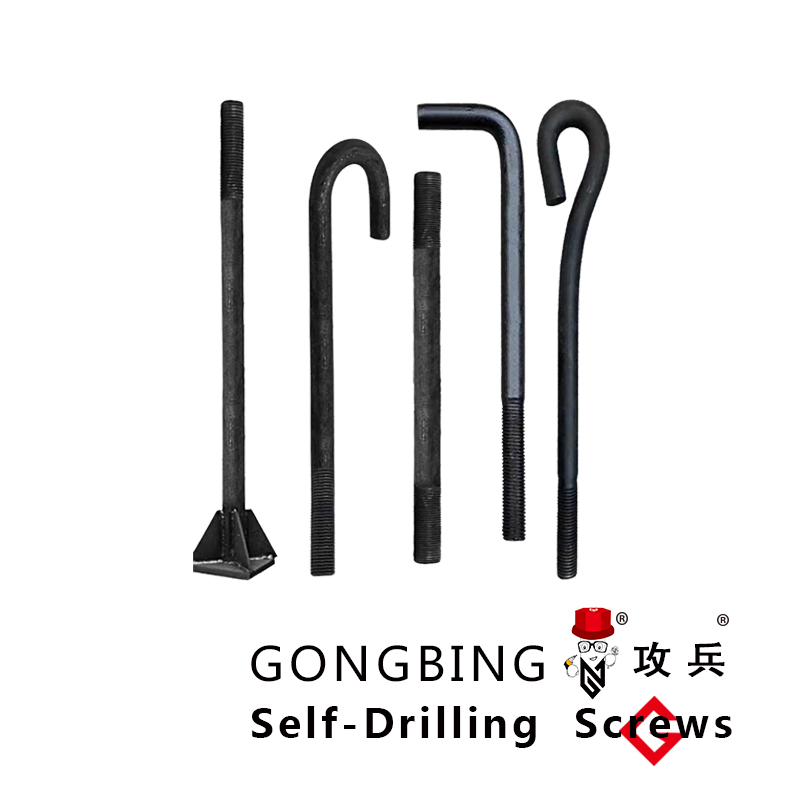what is chemical anchor bolts
Understanding Chemical Anchor Bolts A Comprehensive Overview
In the realm of construction and engineering, the importance of robust fastening solutions cannot be overstated. Among the various anchoring systems available, chemical anchor bolts have gained significant attention due to their versatility and strength. This article aims to explore what chemical anchor bolts are, how they work, their applications, and some advantages and disadvantages associated with their use.
What Are Chemical Anchor Bolts?
Chemical anchor bolts integrate mechanical anchoring with a chemical bonding system to provide exceptional strength and stability in various applications. Typically made of steel, these bolts are used to attach structures or components to concrete and masonry surfaces. The key distinguishing feature of chemical anchors is the use of a two-part adhesive or resin that is injected into a pre-drilled hole before the bolt is inserted. This adhesive, once cured, forms a strong bond between the bolt, the surrounding concrete, and the sides of the hole.
How Do They Work?
The installation process for chemical anchor bolts is relatively straightforward but requires careful execution to ensure optimal performance. Initially, a hole is drilled into the substrate—usually concrete. The depth and diameter of the hole are critical, as they determine the anchor's load-bearing capacity. After cleaning the hole to remove any debris or dust (which might interfere with adhesion), the chemical resin is injected into the hole, filling it adequately. The anchor bolt is then inserted into the resin-filled hole, allowing the adhesive to encapsulate the bolt.
As the resin cures—typically in several hours, depending on the product—the bond between the bolt and the surrounding concrete intensifies, resulting in a durable anchorage solution. This process provides excellent resistance to shear forces and tension, making chemical anchor bolts suitable for various structural applications.
Applications of Chemical Anchor Bolts
Chemical anchor bolts are widely used across multiple sectors. Common applications include
1. Construction and Structural Engineering They are often employed in securing steel frames, bridges, and heavy machinery to concrete foundations. 2. Infrastructure These bolts are essential for anchoring heavy loads in highways, tunnels, and overpasses.
3. Mounting Systems Chemical anchors are ideal for attaching railings, signs, and other fixtures to hard surfaces.
4. Residential Projects They find use in attaching furniture, fences, and deck supports to concrete patios or walkways.
5. Renovation Projects Chemical anchor bolts are also beneficial in retrofitting applications, securely fastening new elements to existing structures.
what is chemical anchor bolts

Advantages of Chemical Anchor Bolts
Chemical anchor bolts offer several advantages over traditional mechanical anchoring methods
1. High Load Capacity The chemical bond provides superior holding power, making these anchors ideal for heavy loads.
2. Versatility They are suitable for diverse substrates, including cracked and uncracked concrete, solid brick, and masonry.
3. Resilience to Environmental Factors Chemical anchors are often resistant to moisture, chemicals, and temperature fluctuations, ensuring durability.
4. Avoids Splitting The radial expansion of chemical plugs minimizes the risk of cracking that can occur with expansion anchors.
Disadvantages of Chemical Anchor Bolts
Despite their many benefits, chemical anchor bolts also come with certain drawbacks
1. Curing Time The need for the adhesive to cure can delay construction timelines, which may not be suitable for urgent projects.
2. Installation Skills Proper installation requires skill and precision; improper techniques can lead to failure in performance.
3. Cost Generally, chemical anchors may come at a higher price point than mechanical alternatives, which can impact project budgets.
Conclusion
Chemical anchor bolts represent a revolutionary advancement in anchoring technology, combining the strengths of mechanics and chemistry to provide reliable and robust fastening solutions. With diverse applications and notable benefits, they have become essential in today's construction and engineering industries. Understanding how they function and their appropriate applications can aid professionals in selecting the right anchoring systems for their projects, ultimately enhancing structural integrity and safety.
-
Weatherproof Plastic Expansion Anchors for OutdoorNewsJun.06,2025
-
Sustainability in the Supply Chain: Eco-Friendly TEK Screws ProductionNewsJun.06,2025
-
Load-Bearing Capacity of External Insulation FixingsNewsJun.06,2025
-
Double Head Bolts: Enhancing Efficiency in Industrial MachineryNewsJun.06,2025
-
Corrosion Resistance in Chipboard Screws: Coatings for Wholesale DurabilityNewsJun.06,2025
-
Butterfly Toggle Bolts : Enhancing Structural ResilienceNewsJun.06,2025
